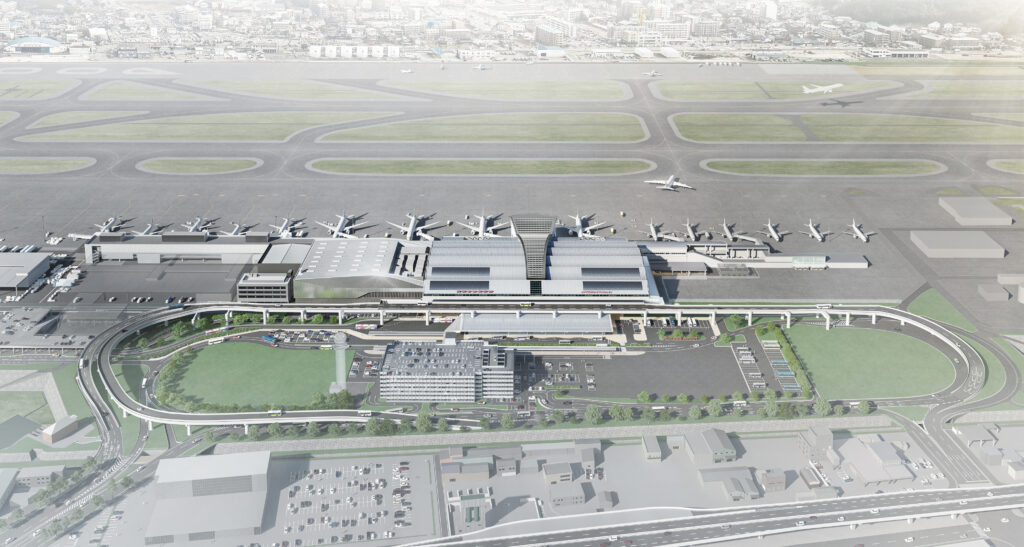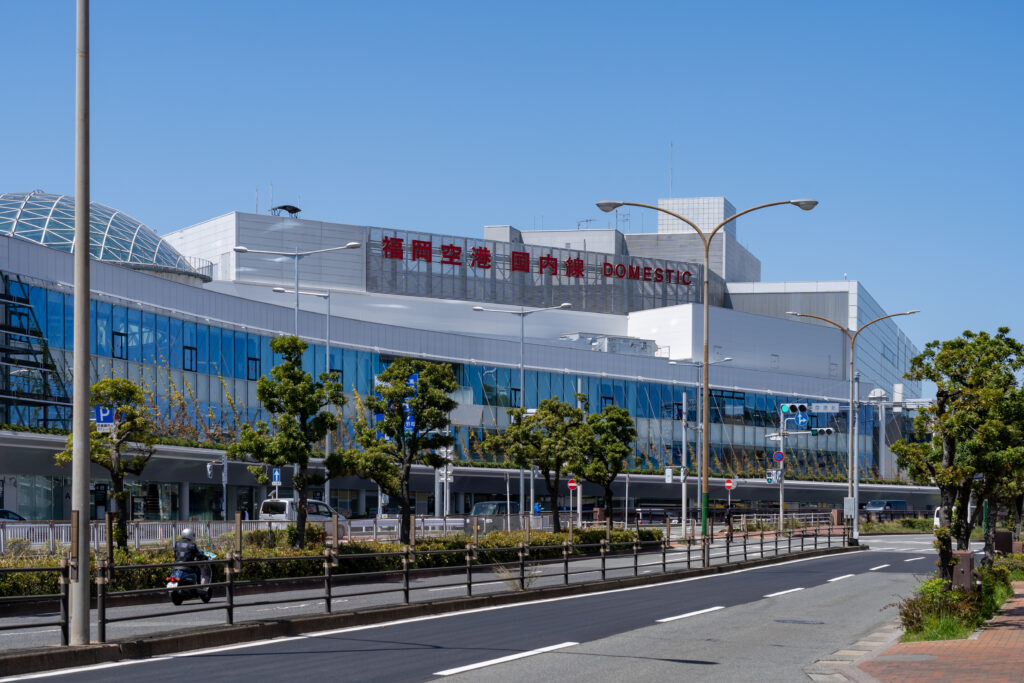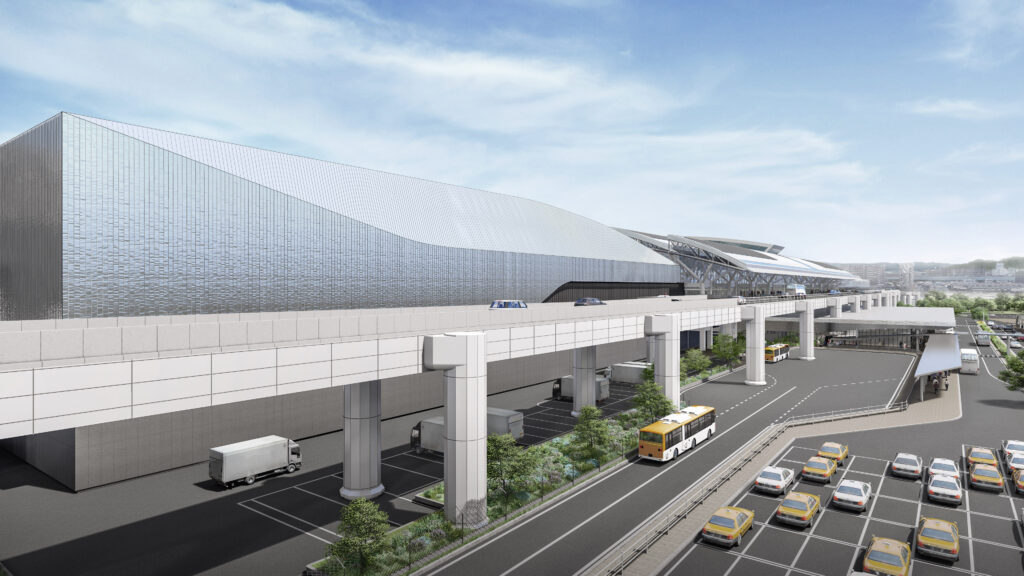With a history dating back to 1944, Fukuoka International Airport is the fourth busiest in Japan and serves more than 24 million passengers annually. It comprises two terminal buildings and has plans for a second runway, due to open in 2025.
Prior to the pandemic, the airport operator Fukuoka International Airport Co Ltd selected Azusa Sekkei, HOK and West JEC to design a state-of-the-art expansion and renovation of its international passenger terminal, which was originally designed by a team led by Azusa Sekkei and HOK in the 1990s.
“The terminal expansion is meant to accommodate increased passenger traffic,” explains Makoto Ishii, executive director of the architecture department at Azusa Sekkei. “The international terminal’s existing capacity is 3.9 million annual passengers, and the expanded terminal will accommodate 12 million annual passengers. Separately, a government-driven runway expansion project is being completed concurrently with the terminal expansion project. With additional future gates, the expanded international terminal will be able to handle 16 million annual passengers eventually.”
Now under construction, the project features an expanded commercial hall, a refreshed departure hall, meeter/greeter space and bus terminal and additional gates and inspection lanes through security, all on a consolidated site around Fukuoka. The project is due to be completed in 2025.

Harmonious design
According to Hiroyuki Kawakami, senior project designer at HOK, the exterior architectural concept is “simple and fluid”, and the design team’s intent is to create harmony with the existing building without simply replicating the current structure. “It will incorporate a new form and aesthetic, expressing the airport’s mobility and ambition, which represents the new Fukuoka Airport,” Kawakami adds.
Starting with the planning phase in May 2019, the design team worked to create a space that is intuitive and inviting for travelers. “The robust and extensive commercial hall is designed to be a fun and exciting space that wows travelers,” explains Ishii. “A Japanese-themed interior design is featured throughout the expanded terminal, including the inbound passport control area that is the first contact point for passengers arriving from overseas.” Traditional crafts from Fukuoka and the rest of Japan will be referenced through colors, textures and geometric patterns in the interior design.
The exterior features standing-seam metal cladding that is lightweight and low maintenance. A simple monolithic massing concept complements the existing terminal’s complex foil roof design.
Flexible space
As with any airport, providing ample space for retail, food and beverage concessions is a key consideration in the design of the new terminal, and the upgraded commercial hall will include high-quality brands, a cosmetics area, food hall and duty-free shop, as well as “Japanese and local design cues to entertain travelers and enhance revenue for the airport”, according to Kawakami.
The consolidated commercial hall captures all departing passengers, maximizing revenue for the airport and convenience for travelers. The flexible, futureproof design of the hall allows the airport to upgrade its concessions to fit changing commercial demands and trends in coming years. More details of the concession program will be shared as the project progresses.
“The expanded arrival hall, also known as the access hall, is designed to be a convenient and flexible space not only for arriving passengers but also for meeters and greeters welcoming friends and family,” enthuses Kawakami. It features the same architectural theme as the main expansion and includes a separate building
under the existing elevated roadway. A new arrival curbside is repositioned outside the existing departure roadway structure, creating a bright, open space to elevate the traveler experience.
Ishii continues, “The bus terminal will provide travelers with a better connection to the street bus network and long-distance coach buses. This will enhance the convenience for passengers and generate additional demand for flights to/from Fukuoka Airport. It will also provide access to the inter-terminal landside shuttle bus that is planned to be autonomous in the near future.”

Enhanced experience
Passenger processing will also be upgraded, with plans for a newly expanded security screening checkpoint located at the north end of the existing terminal. “The expanded concourse will also feature MARS (multiple aircraft ramp system) gates,” Kawakami says.
“The entry portal to the screening checkpoint is highly visible from the check-in lobby, creating an intuitive wayfinding experience,” Ishii adds.
Despite passenger numbers falling dramatically in Japan following the Covid-19 pandemic (international travel was down 93.3% in August 2022 compared with the same period in 2019, according to the Japan National Tourism Organization) the airport is still positive that its expansion plans will provide a great return on investment.
“The international terminal expansion is a highly cost-effective design,” concludes Kawakami. “The project team worked with the airport to incorporate smart planning ideas that would make the most out of the existing terminal building while minimizing the renovation cost and work within the consolidated site available for the expansion.”

